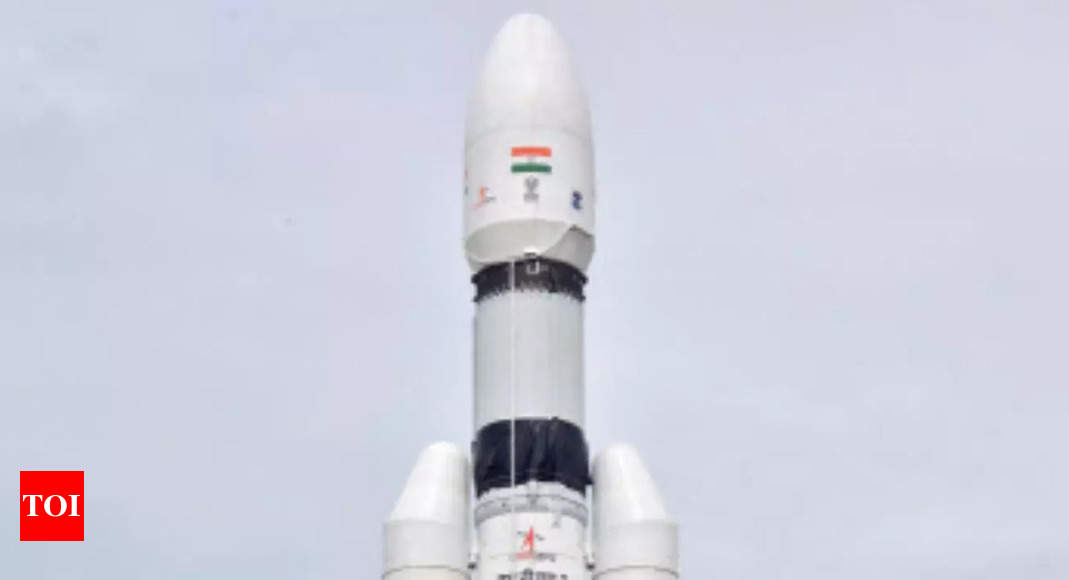Isro chairman S Somanath told TOI that LVM3 will place Chandrayaan-3 in an apogee (farthest point from Earth) of 36,500km as against 45,475km during Chandrayaan-2. The perigee (closest point to Earth) will be around 170km, nearly the same as last time. “This is being done to get more stability,” he said.
4+1 Earth-Bound Manoeuvres
Another scientist explained: “In Chandrayaan-2, we took the ‘burn to depletion’ — use the last drop of fuel — approach with the cryogenic upper stage to achieve high altitude. However, that creates post-launch tracking challenges given that we use international stations. So, we’ve decided to go to a definitive orbit (36,500km), making initial tracking and operations that follow more efficient.”
Isro will then conduct multiple Earth-bound manoeuvres to increase Chandrayaan-3’s orbit before commands for trans-lunar insertion (TLI) that will kick off the spacecraft’s journey towards Moon, are given. Multiple scientists explained that Isro will perform four major manoeuvres — No 1, 3, 4 and 5 — to raise the apogee, while the second manoeuvre will be a minor perigee-rising one.

04:50
Chandrayaan-3 to launch on July 14; ISRO chairman explains how this moon mission is different from Chandrayaan-2
TLI Expected On July 31
If all goes as planned, TLI will be done on July 31. Chandrayaan-3 will then travel towards Moon for about five-and-a-half days and lunar orbit insertion is expected around August 5. These are estimations for nominal performance.
“Spacecraft will initially be on a greater apolune (farthest point from Moon) and we’ll do multiple perilune (closest point) manoeuvres to reduce altitude eventually to a 100km X 100km circular orbit. It’s too early to speak about exact dates for this milestone,” one scientist explained, adding there could be around five lunar-bound manoeuvres before the final descent phase.
After Chandrayaan-3 reaches 100km X 100km orbit, the lander module (Vikram & Pragyan) will separate from the propulsion module and be eventually brought to a 100km X 30km orbit, from where commands for deboost and final descent is expected on August 23.

07:55
Chandrayaan-3: ISRO chief explains about the most difficult lunar mission
Larger Landing Site & Lander Changes
Other than changes on Vikram — strengthening of legs, new sensor, solar panels, etc — which TOI has reported earlier, Somanath said, a key change is the increased landing area.
“In Chandrayaan-2, the landing site was 500m X 500m and we wanted to land at the centre, which resulted in some limitations. Now, the landing site is 4km X 2.5km. At nominal conditions, we’ll attempt landing at the centre point, but otherwise, Vikram can land anywhere in this area, giving it greater flexibility,” he said, adding that high-resolution images from Chandrayaan-2 orbiter have also made landing site understanding better.
Explaining what went wrong last time, Somanath said: “The plan was to image the landing area just before landing and attempt landing in the subsequent orbit. Lander engines developed a slightly higher thrust, but within specifications. However, errors on account of such differences accumulated during the last (camera coasting) phase when spacecraft needed to be very steady to take pictures and make corrections.”
“…All accumulated errors meant we had a lot of corrections and the craft had to turn very quickly given that it had already attained an altitude too close to the surface. However, when it started turning fast, its ability to turn was limited by the software as we’d not anticipated such a high rate of errors,’ he added.
This time, onboard systems won’t let errors accumulate. “They’ll be corrected within 96 milli-seconds, almost in real-time,” Somanath said, adding that the lander is also equipped with additional TTC (tracking, telemetry and command) antennas.
Watch Chandrayaan-3: Rover to study moon’s surface and atmosphere, says ISRO Chief S Somanath
